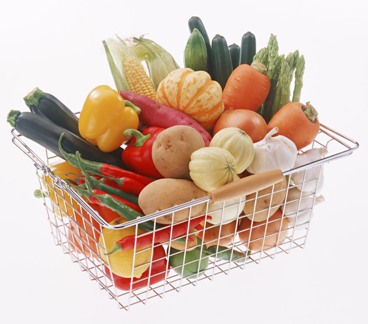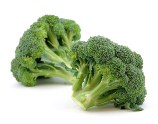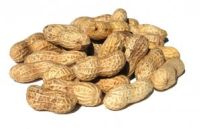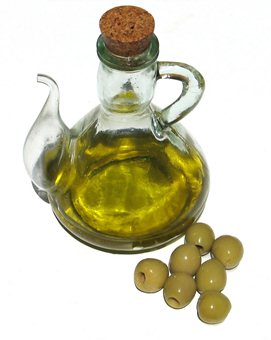
When you get your food home, clean all your produce thoroughly.
Rinse and dry all greens, remove any wilted or spoiled leaves, and refrigerate them promptly. Consider using a produce wash for any nonorganic ingredients to remove any pesticides and other shipping and handling residues. A few commercial varieties of produce washes are available with natural ingredients. Some also use a few drops of grapefruit seed extract or food-grade hydrogen peroxide per gallon of water. Produce loses its vibrancy over time, so check daily to ensure freshness. Purchase only what you can consume within a few days. Store leafy greens in the refrigerator in airtight containers lined with a slightly damp cloth or paper towel to avoid wilting. Store peppers, celery, carrots, cucumbers, zucchini, and similar vegetables in the crisper drawer. Store mushrooms in paper bags or a towel to keep them the freshest.
other shipping and handling residues. A few commercial varieties of produce washes are available with natural ingredients. Some also use a few drops of grapefruit seed extract or food-grade hydrogen peroxide per gallon of water. Produce loses its vibrancy over time, so check daily to ensure freshness. Purchase only what you can consume within a few days. Store leafy greens in the refrigerator in airtight containers lined with a slightly damp cloth or paper towel to avoid wilting. Store peppers, celery, carrots, cucumbers, zucchini, and similar vegetables in the crisper drawer. Store mushrooms in paper bags or a towel to keep them the freshest.
You can enjoy most fruits and vegetables in their raw state, but steer clear from some because of their potential toxicity. Avoid raw taro, rhubarb, and cassava because of the toxins present in their raw forms. Potatoes that have turned green contain the toxin solanine and should also be avoided. And there’s currently debate in the raw food community on whether certain other foods are okay in their raw state. Raw peanuts, for example, can contain a toxic mold called aflatoxin and should generally be avoided. Check out the raw websites in Appendix B for a source of raw organic wild peanuts said to test free of aflatoxins.
For maximum freshness, store fruits in containers that allow air to circulate under the fruits. Outside the refrigerator, keep thick-skinned fruits like citrus and bananas in easy-to-access bowls so kids can grab them for quick snacks. Store tomatoes outside the refrigerator so they can ripen and for optimal flavor. Likewise, allow avocadoes to ripen outside the fridge. Store ripe avocadoes in the refrigerator. We like to store nuts, seeds, grains, and beans in glass jars with airtight seals in a cool, dark place or in the refrigerator or freezer. These foods contain oils that can become rancid if they’re not stored properly.
Our Favorite Ingredients
Thanks to the abundance of the plant kingdom, you have so many delicious foods to enjoy while eating raw. In the following sections, we present some of our favorite ingredients. We hope you find many favorites, too!
Fabulous Fruits
Eating raw first begins with a love and enjoyment of eating fresh fruits. Be sure to sample the different varieties of apples; avocadoes; oranges; grapes; bananas; papayas; mangos; pineapples; cherries; peaches; pears; kiwifruits; figs; plums; dates; grapefruit; lemons; limes; tomatoes; watermelon and other melons; tropical fruits such as jackfruit, durians, and cherimoyas; and berries such as blueberries, strawberries, raspberries, blackberries, and cranberries. Talk about a rainbow of color! Fruit in its dried or dehydrated state also has a place in a raw foods diet. Check out delicious dried figs, raisins, currants, apricots, goji berries, mangoes, and papayas.
oranges; grapes; bananas; papayas; mangos; pineapples; cherries; peaches; pears; kiwifruits; figs; plums; dates; grapefruit; lemons; limes; tomatoes; watermelon and other melons; tropical fruits such as jackfruit, durians, and cherimoyas; and berries such as blueberries, strawberries, raspberries, blackberries, and cranberries. Talk about a rainbow of color! Fruit in its dried or dehydrated state also has a place in a raw foods diet. Check out delicious dried figs, raisins, currants, apricots, goji berries, mangoes, and papayas.
Frozen fruits are also considered live. There might be a small decrease in nutritional value, but frozen fruits are awesome in smoothies and enable you to enjoy a variety of fruits throughout the year. Also, frozen fruits retain much more of their nutritional content compared to fruits that haven’t been purchased locally or that have been kept in the house for a week, for example.
Versatile Vegetables
In the vegetable kingdom, the bounty includes broccoli; cabbage; cauliflower; kale; arugula; spinach; bell peppers; celery; carrots; beets; yellow squash; zucchini; cucumbers; green beans; peas; corn; asparagus; onions; garlic; ginger; scallions; shallots; turmeric; wild greens like purslane and dandelion; Jerusalem artichokes; kohlrabi; galangal (Thai ginger); fresh or dried chilies such as ancho, jalapeño, poblano, Serrano, and chipotle; and all the wonderful lettuces, such as buttercup, red leaf, romaine, mesclun, and micro greens.
yellow squash; zucchini; cucumbers; green beans; peas; corn; asparagus; onions; garlic; ginger; scallions; shallots; turmeric; wild greens like purslane and dandelion; Jerusalem artichokes; kohlrabi; galangal (Thai ginger); fresh or dried chilies such as ancho, jalapeño, poblano, Serrano, and chipotle; and all the wonderful lettuces, such as buttercup, red leaf, romaine, mesclun, and micro greens.
Nuts and Seeds
Don’t forget nuts, nature’s nutrition powerhouses. We like the following nuts: Brazil nuts, hazelnuts (filberts), macadamia nuts, pecans, pine nuts, pistachios, walnuts, and almonds. Our favorite seeds include sesame (the unhulled variety), pumpkin, sunflower, flax, and hemp, all of which are quite versatile and can be used in a variety of ways.
We also like to keep some nut and seed butters on hand. We use our Champion juicer to make awesome almond, macadamia, and cashew butters. Varieties of raw nut butters are available in many health food stores. Tahini is a delicious butter created from ground sesame seeds. A staple in Middle Eastern cuisine, we love to use it in many ways, including dressings, sauces, and even dessert. Coconut, which many consider a nut, is actually the largest seed of the plant kingdom from the coco palm. Cashews, sublime in their raw state, are actually an external seed to a tropical fruit.
The cashews sold in supermarkets and health food stores labeled “raw” are actually\ not strictly raw. In the wild, cashew kernels come in a hard shell. The shell is generally heated to open it and release the cashew kernel. Despite the heating, many raw foodists eat them anyway, especially if the cashews are cultured into cheese to\ increase its enzyme activity and nutrients.
Grains and Legumes
Certain grains that can be soaked or sprouted are part of our raw pantry. Quinoa, buckwheat, barley, amaranth, and oats, along with wheat, spelt, and rye berries are all in our pantry. Legumes to check out for soaking and sprouting include lentils, mung beans, garbanzo beans, and adzuki beans.
Healing Herbs
Herbs can make all the difference in a food’s flavor. The best way to learn the different flavors and combinations of herbs is to taste them one at a time. Take a moment to smell the herb after crushing it gently with your fingers. Try chewing on the leaf to get to know its flavor. Review its characteristics, and read up on it if you want to learn more. Try different combinations to discover flavors you like. It’s a trial-and-error exploration, so have fun with it. Consider experimenting with popular culinary herbs such as basil, dill, oregano, thyme, rosemary, lemongrass, chives, mints, cilantro (coriander), marjoram, sage, chervil, kaffir lime leaves, tarragon (French and Mexican varieties), Thai basil, and flat-leaf Italian parsley. We prefer the flat-leaf Italian parsley to the curly parsley because it has more flavor and beneficial health properties.
leaves, tarragon (French and Mexican varieties), Thai basil, and flat-leaf Italian parsley. We prefer the flat-leaf Italian parsley to the curly parsley because it has more flavor and beneficial health properties.
If a recipe calls for fresh herbs and all you have is dried, you can substitute. Use 1 teaspoon dried herb for every 1 tablespoon fresh herb called for in the recipe. The dried herb generally has more concentrated flavor than the fresh herb. This ratio is not a hard and fast rule, though, as the intensity of flavor of dried herbs diminishes over time.
Most culinary herbs and spices have rich folklore and a long history of medicinal use. Basil and oregano, for instance, are purported to have strong antibacterial properties and to support the immune system. Cardamom, cinnamon, ginger, and fennel are thought to be good for digestive health.
Spices of the World
We could write an entire book on spice blends! Each spice, or plant part, contains its own rich history. As raw foodists, we value shaving fresh cinnamon sticks on fruit salads and grinding nutmeg into live lattés. But that’s merely the tip of the spice iceberg! We recommend purchasing organic, nonirradiated herbs and spices whenever possible. Try a few of these blends to catapult you into the world of spice mixing:
- Mexican cumin, cilantro, chili powder, cinnamon, oregano, and cloves
- Indian cumin, curry, turmeric, ginger, cilantro, coriander, cardamom, chilies, asafetida, tamarind, cloves, fenugreek, mint, mustard seeds, and fennel seeds
- Italian basil, coriander, nutmeg, black pepper, saffron, vanilla, bay leaves, fennel, marjoram, oregano, parsley, and rosemary
- French herbes de Provence (thyme, rosemary, marjoram, basil, savory, lavender, and bay leaf) and fines herbes (parsley, chives, tarragon, and chervil)
- Moroccan cinnamon, cumin, ginger, saffron, cayenne, paprika, mint, anise seed, black pepper, parsley, and mint
As the ultimate in live food cuisine, many of today’s better chefs are using these spice blends to deliver some of the tastiest tamales, Pad Thai, and enchiladas imaginable.
Salt Selections
Not all salts are created equal. There are literally hundreds of salts, and the purest are fun to use in live food preparation. Iodized table salt is highly refined and contains anti-caking agents. It is not considered a raw food.
Sea salt was the most common salt used until approximately the 1920s. Use of sea salt diminished with the advent of iodized salt, but it still reigns as the most commonly available of the mineral-rich salts. The least-processed raw varieties are moist, coarse, and optimal for live food dishes.
Celtic sea salt is a popular unprocessed whole salt from a pristine coastal region in France. Raw foodists often recommend this salt for its superior quality, taste, and mineral content. Purchase the coarse variety and grind it yourself. Many in the raw foods community consider Himalayan crystal salt the purest salt available. Said to be more than 250 million years old, mined by hand, and carefully rinsed, it’s the least processed of all the salts. We use Himalayan salt in all our recipes. The sodium content in the nutritional information reflects this use. Feel free to use any of the sea salts mentioned earlier in your own kitchen, though. Mineral-rich salt plays an important role in optimal nutrition, so choose your salt wisely, and use it in moderation as a mild flavor accent.
Cool Condiments
Sometimes a condiment can make or break a dish. Here are a few of our favorite condiments:
Nutritional yeast, although not a raw food, plays an important role in many raw foodists’ lifestyles. It’s a source of protein and is loaded with vitamins and amino acids. We use nutritional yeast as a condiment and to add a cheesy and nutty flavor to dishes. Store nutritional yeast in a cool, dark place in an airtight jar, and use it within a few months.
Miso is a paste made from cultured soybeans, rice, or barley. Because miso is made via a cultured process, it’s considered a live food. The culturing process creates enzymes and many beneficial nutrients such as B vitamins and essential amino acids. Be sure you purchase the unpasteurized variety. Miso varies in color from light varieties such as mellow, shiro, or garbanzo bean to the darker ones, such as brown rice, hatcho, red, or barley. The lighter varieties are usually fermented for a shorter period and are more delicately flavored and sometimes sweet. The darker varieties are heavier and saltier. Miso is used in many recipes, including dips, dressings, sauces, spreads, and of course the traditional soup.
Nama shoyu is an unpasteurized soy sauce (nama means “raw” in Japanese) made from cultured soybeans and wheat. When it’s aged, a culturing process takes place that creates enzyme activity and beneficial organisms such as lactobacillus, which is good for promoting healthy intestinal microflora. Condiments help bump up flavors to the next level. When eating raw, the condiments contribute nutrients while improving taste.
The Sweet Mystery of Life
Our favorite sweetener is the natural sugar found in fresh fruits. Dates are an awesome, nutrient-rich natural sweetener. Try them in smoothies, raw piecrusts, and other desserts. Many varieties of dates are available. Try the juicy Medjool or the smaller Deglet Noor or Barhi dates.
Here are some other sources of nature-provided sweetness:
-Agave nectar or agave syrup is a popular sweetener from the famous agave cactus that gives us tequila. It has a mild taste with a consistency slightly thinner than honey.
-A little agave goes a long way—it’s four times sweeter than cane sugar with half the glycemic index (GI). Agave might be an acceptable sweetener for those with diabetes and hyperglycemia, but please consult your physician or a registered dietitian.
-Stevia leaf is in the mint family and stems from Paraguay, South America. It’s super sweet—hundreds of times sweeter than sugar. Stevia is purported to benefit tooth health, of all things, and it contains vital nutrients such as calcium and phosphorus. It’s calorie free and is being studied as an acceptable sweetener for diabetics due to its extremely low glycemic index.
-The dried leaf, which imparts a slight licorice flavor, is the most unrefined form available. Stevia also comes as a powder and in a tincture form.
form.
-Maple syrup is made from the sap of special maple trees. In the collection process, maple syrup is boiled off at temperatures far exceeding the live boundaries. It’s rich in minerals such as manganese and zinc and contains fewer calories than honey.
Because of the boiling off, maple syrup is not a raw food, although it’s commonly used as a condiment because it supplies a unique and wonderful flavor. We list it as an ingredient in several of our recipes. Feel free to substitute it with agave or a combination of agave and yakon.
Raw honey has an ancient history of culinary and medicinal use. Be sure you get the raw, organic variety, ideally from a local beekeeper. Raw honey also has antibacterial and antiviral properties. And because honey is an animal product, strict vegans don’t consume it.
Yakon syrup is an up-and-coming sweetener that comes from the yakon tuber, a distant relative of the sunflower. Grown in the Andean region of South America, it’s a lowcalorie sweetener with a dark brown color. Purported to be an acceptable sweetener for diabetics, yakon syrup contains antioxidants and nutrients like potassium. Other sweeteners to consider for raw desserts or sweetening cereals or other dishes include dried fruits and berries. Each of these sweeteners has its own virtues.
Vegetables of the Sea
People have consumed certain seaweeds or sea vegetables for thousands of years. Seaweeds are a source of important minerals and nutrients such as calcium, zinc, protein, and trace elements like iodine. To one degree or another, they impart a seafood flavor to dishes. Store sea veggies in an airtight container in a cool, dark place. Here are some of our favorites:
Dulse is a great protein source, and we like snacking on the whole leaves and using the flakes as a salt replacement or as a condiment on salads.
Arame is a wonderful mild seaweed that tastes great in salads and soups. It also makes a good introduction to the sea vegetable world if you’re new to these foods.
Kombu is widely used as a soup base and flavoring in Japan.
Wakame is the beautiful emerald-green seaweed found in seaweed salad and miso soup. It’s in the kelp family and is a good source of essential fatty acids.
Nori is a combination of red algaes that are shredded, dried, and pressed like paper and often used in sushi or maki rolls. Be sure to purchase the sun-dried variety because most nori is toasted and often has soy sauce, sugar, and salt added.
Kelp, a brown algae, grows as much as 2 feet per day in large, dense underwater forests—some 3 stories high, in cold, clear waters. It’s high in B vitamins, protein, iron, magnesium, and zinc and is a perfect source of iodine. Kelp comes in a variety of forms, including powder and coarsely ground. Also, check out a great new raw kelp noodle product on the market made by Sea Tangle Kelp Noodle Company.
Some recommend including sea vegetables only as a condiment. However you include them in your diet, be sure to get sun-dried varieties to ensure their live nature.
What to Do About Oils?
Many raw foodists discourage the use of any oils, regardless of whether they’re cooked or raw, because it is a processed food. Additionally, due to oxidation, oils tend to become rancid quickly when removed from their natural state in food. Most raw foodists include some of the following oils, however, especially when transitioning from cooked foods:
Olive oil ranges in flavor from mild to strong. Choose cold-pressed oil, although many times even the cold processing is too hot for the oil to be considered raw. (Bariani olive oil, available at www.sunfood.com, is a truly raw variety made with organic, sustainably grown olives that are stone pressed.) With its pungent aroma and taste, cold-pressed, extra-virgin olive oil is a favorite, and we recommend it in all our recipes that call for olive oil. This virgin olive oil is from the first pressing and contains the most flavor and nutrients. Flax seed oil has a light, nutty flavor and is a great source of essential fatty acids, especially omega-3s. Be sure to keep flax oil refrigerated once opened. It will stay fresh for 4 to 6 months, depending on the brand, but be sure to check the expiration date.
be considered raw. (Bariani olive oil, available at www.sunfood.com, is a truly raw variety made with organic, sustainably grown olives that are stone pressed.) With its pungent aroma and taste, cold-pressed, extra-virgin olive oil is a favorite, and we recommend it in all our recipes that call for olive oil. This virgin olive oil is from the first pressing and contains the most flavor and nutrients. Flax seed oil has a light, nutty flavor and is a great source of essential fatty acids, especially omega-3s. Be sure to keep flax oil refrigerated once opened. It will stay fresh for 4 to 6 months, depending on the brand, but be sure to check the expiration date.
Coconut oil is the most stable of all oils and is slow to oxidize, therefore causing it to go rancid more slowly. While coconut oil does contain saturated fat, its fatty acids have short tail lengths, which are thought to be easier to digest and doesn’t have the same adverse effects as the saturated fat in animal products. However, this belief has not been sufficiently confirmed by scientific studies, so use with moderation.
Hemp seed oil has a pleasant, nutty taste. It contains high-quality protein and more beneficial EFAs than flax oil. Like flax oil, it requires refrigeration. (If you’re wondering, the hemp seeds are perfectly legal and do not contain any psychoactive properties.)
Hemp seed oil lasts 4 to 6 months refrigerated, depending on the brand, but check the expiration date.
For maximum freshness, be sure your oils are cold pressed, stored in dark jars, and refrigerated after opening.
Versatile Vinegars
Vinegars result from a natural fermation process of certain grains and fruits; therefore, all vinegars can be considered live foods unless they’ve been pasteurized. Most vinegars last about 2 years in a cool, dark place. Once opened, use them within 6 months to a year for maximum flavor.
maximum flavor.
The most popular vinegar within the raw community is raw, unfiltered apple cider vinegar. Apple cider vinegar is purported to support the immune system, promote digestion, help control weight, relieve muscle pains, and promote healthy skin.
While many in the raw community question whether to include vinegar due to its high acid content, some varieties such as umeboshi plum vinegar, unfiltered brown rice vinegar, and raw apple cider vinegar have more mellow acidity. We also occasionally use balsamic vinegar, which adds a deep and full-bodied flavor to dishes. Mirin is another condiment we use that imparts a sweet, unique flavor to dishes. We include it here because it’s frequently confused with rice wine vinegar. It’s actually a sweet rice wine.
Fats—Friend or Foe?
Unsaturated fats are the heart-healthy fats. They include polyunsaturated and monounsaturated fats that are liquid at room temperature and don’t appear to negatively impact cholesterol levels. They’re found in nuts and seeds and such foods as avocadoes, olives, corn, and their oils.
Saturated fats are the heart-unhealthy fats. They’re solid at room temperature and have been shown in research studies to increase cholesterol levels, which can lead to the development of atherosclerosis (hardening of arteries) and heart disease. Saturated fat is found mainly in animal products such as meat and dairy and some plants. Plant foods that contain saturated fat include coconut, coconut oil, palm oil, palm kernel oil, and cocoa butter.
cholesterol levels, which can lead to the development of atherosclerosis (hardening of arteries) and heart disease. Saturated fat is found mainly in animal products such as meat and dairy and some plants. Plant foods that contain saturated fat include coconut, coconut oil, palm oil, palm kernel oil, and cocoa butter.
Hydrogenated fats and trans-fatty acids are also heart unhealthy fats, created by inserting hydrogen into an unsaturated fat through a process called hydrogenation. By chemically altering the structure of the unsaturated fat, this process allows the fat to stay solid at room temperature and delays rancidity, thereby extending the shelf life of processed food products. The result is a fat that’s perhaps even more harmful than saturated fats. Trans fats have actually been banned in countries and cities around the world because of their known effect of raising “lousy” (LDL) cholesterol and decreasing “healthy” (HDL) cholesterol, which may lead to atherosclerosis, and increase the risk of developing heart disease and stroke. Used to make margarine and shortening, these synthetic hydrogenated fats are also abundantly found in processed foods. By eating a wide variety of raw foods, you’re guaranteed to consume healthy essential fatty acids and minimize your intake of heart-unhealthy fats.
Pure, Clean Water
Pure, clean water is essential for life and is of the utmost importance for a healthy body. It makes up 2/3 of your body weight, which means the water you drink actually becomes part of you! Therefore, it’s important to drink the right amounts of the best-quality water. An ideal way to meet your body’s need for water is through luscious fruits and vegetables.
Special Goodies
Now for a few additional special ingredients we love to have on hand. For starters, we like raw cacao, spirulina, and maca powder.
We also love using fresh vanilla beans in our smoothies and desserts, especially Tahitian and Mexican varieties. Raw carob powder is another goodie we often use as a chocolate substitute. Also referred to as St. Johns Bread or Honey Locust, it contains minerals and B vitamins and is great in raw treats and smoothies. Pickled ginger, wasabi powder, umeboshi plums, and plum paste are other treats we like. We discuss these ingredients in later chapters. Nature’s Path’s Manna Bread is made from sprouted grains and cooked at low temperatures. Several delicious varieties are available. It’s not a raw food, but we feel it is by far the most healthful bread on the market. It makes a great transition food if you don’t have time to make your own.
The Least You Need to Know
- An unimaginable amount of delicious raw foods are available for you to enjoy— variety is certainly the spice of life.
- Having a super-stocked pantry makes raw food creation fun and easy.
- Satisfy your sweet tooth with wonderful raw sweeteners like fresh dates, agave nectar, or yakon syrup.
- Get much of your daily supply of water from fresh fruits and vegetables.
![]()
Disclaimer: This website is for information purposes only. By providing the information contained herein we are not diagnosing, treating, curing, mitigating, or preventing any type of disease or medical condition. Before beginning any type of natural, integrative or conventional treatment regime, it is advisible to seek the advice of a licensed healthcare professional.



























